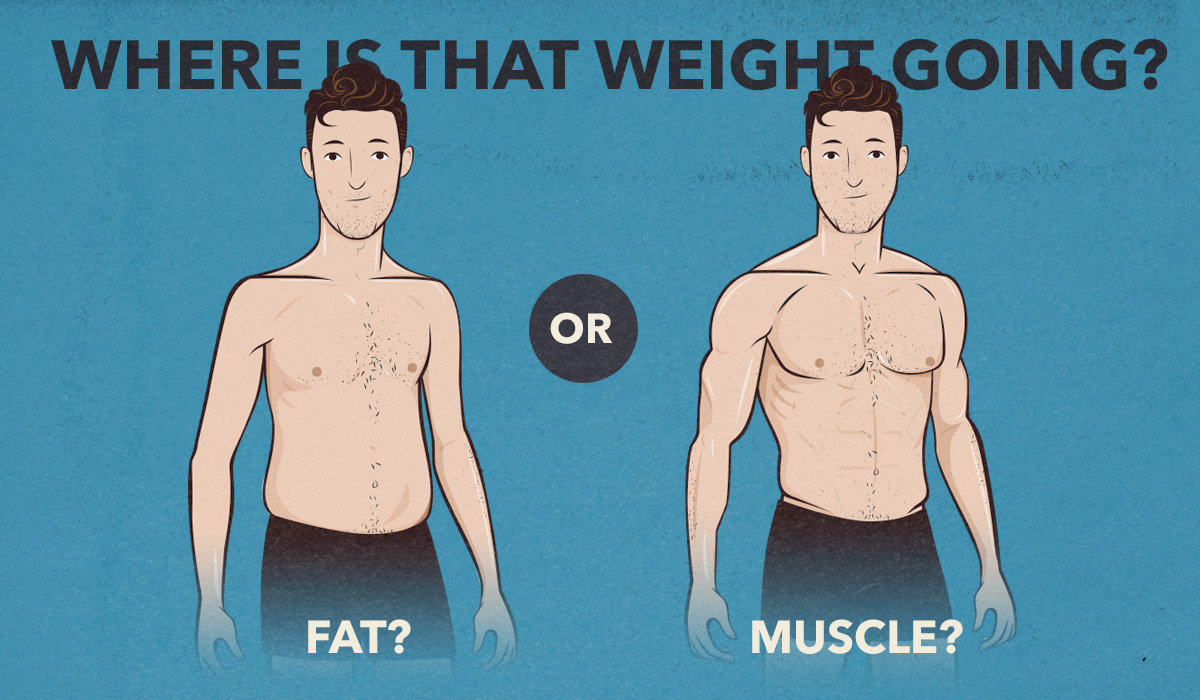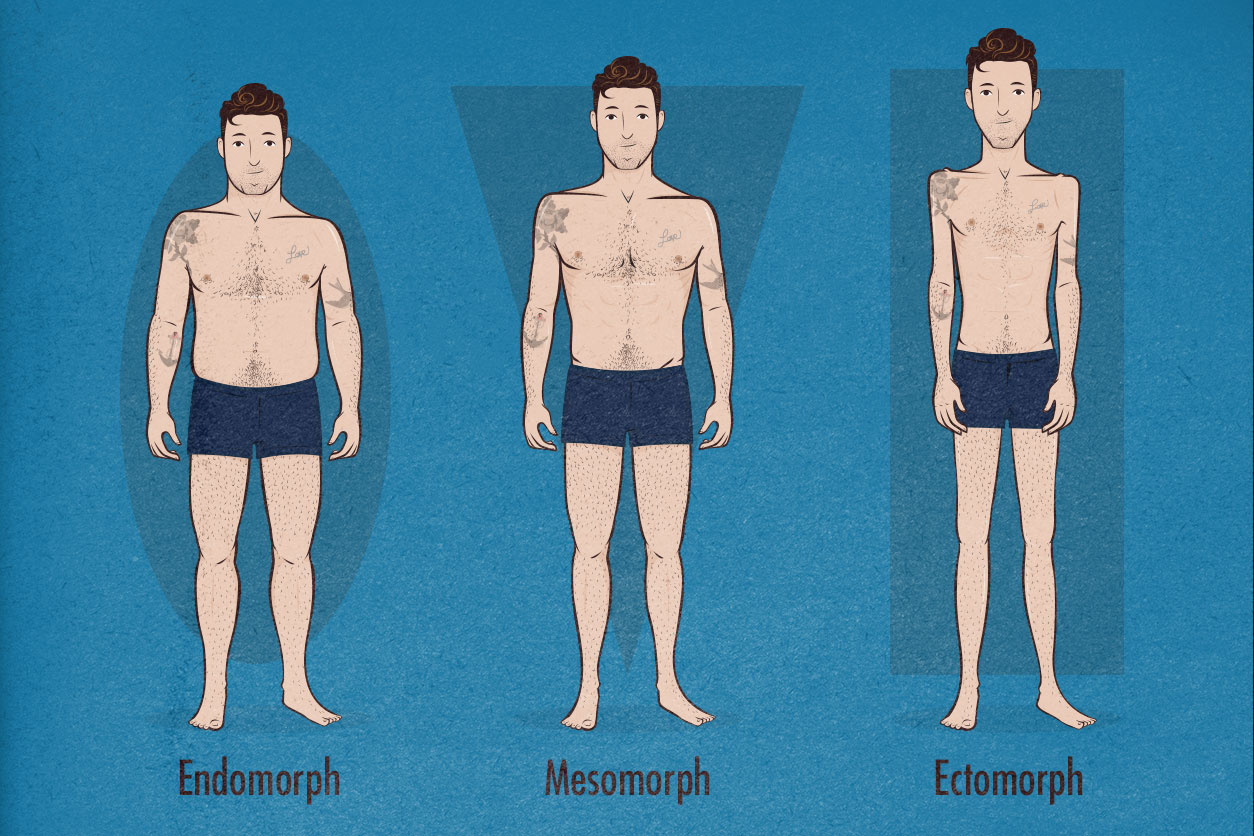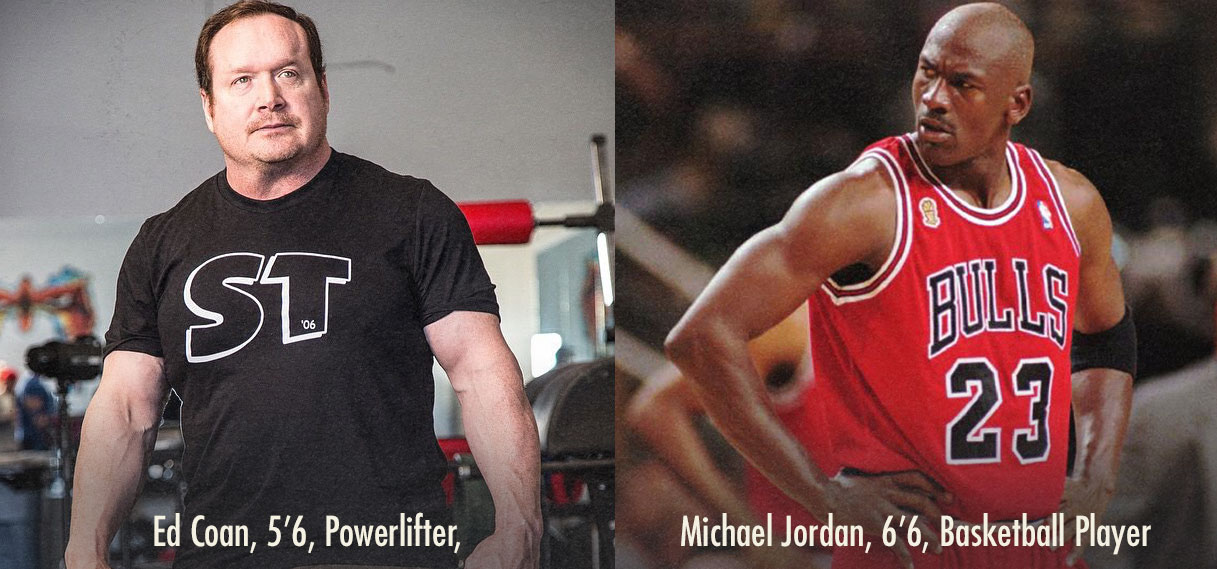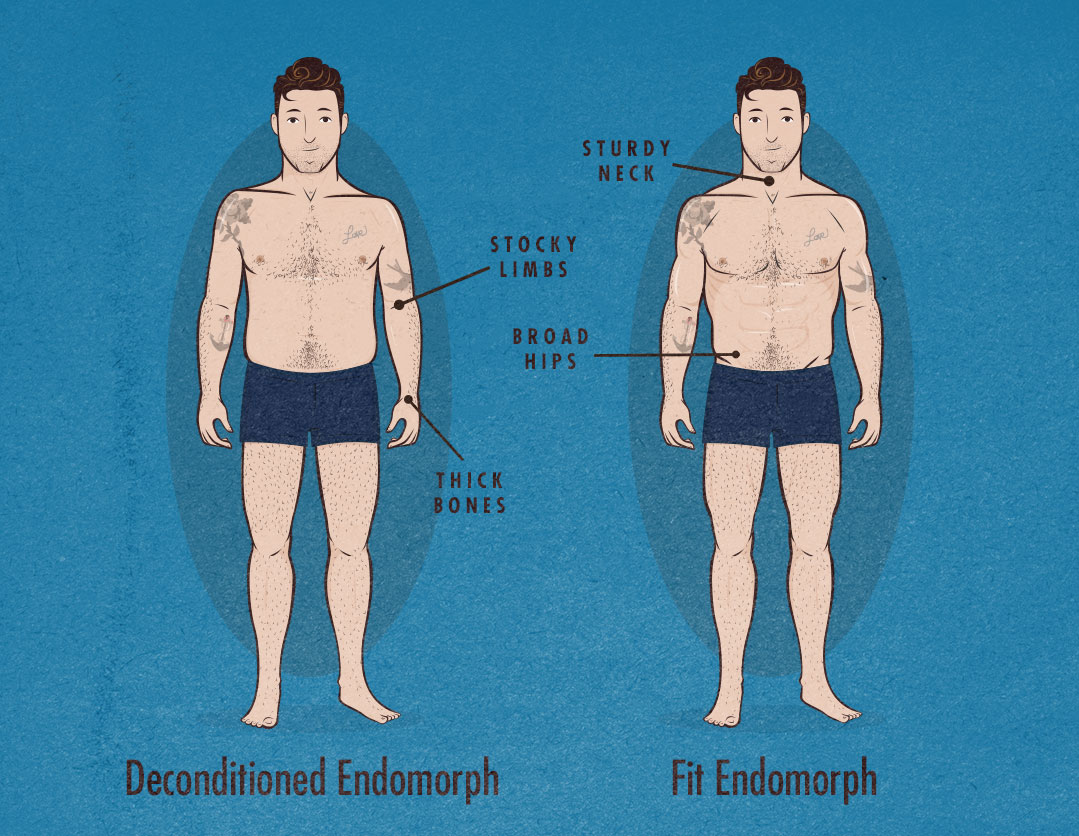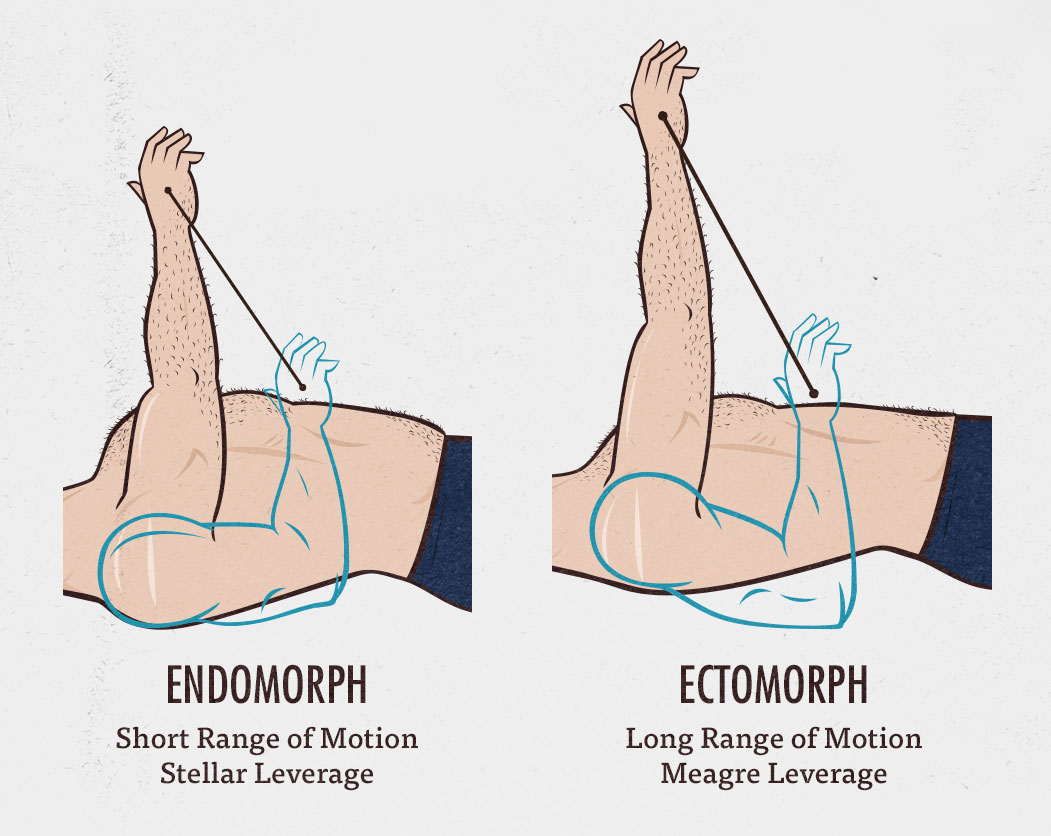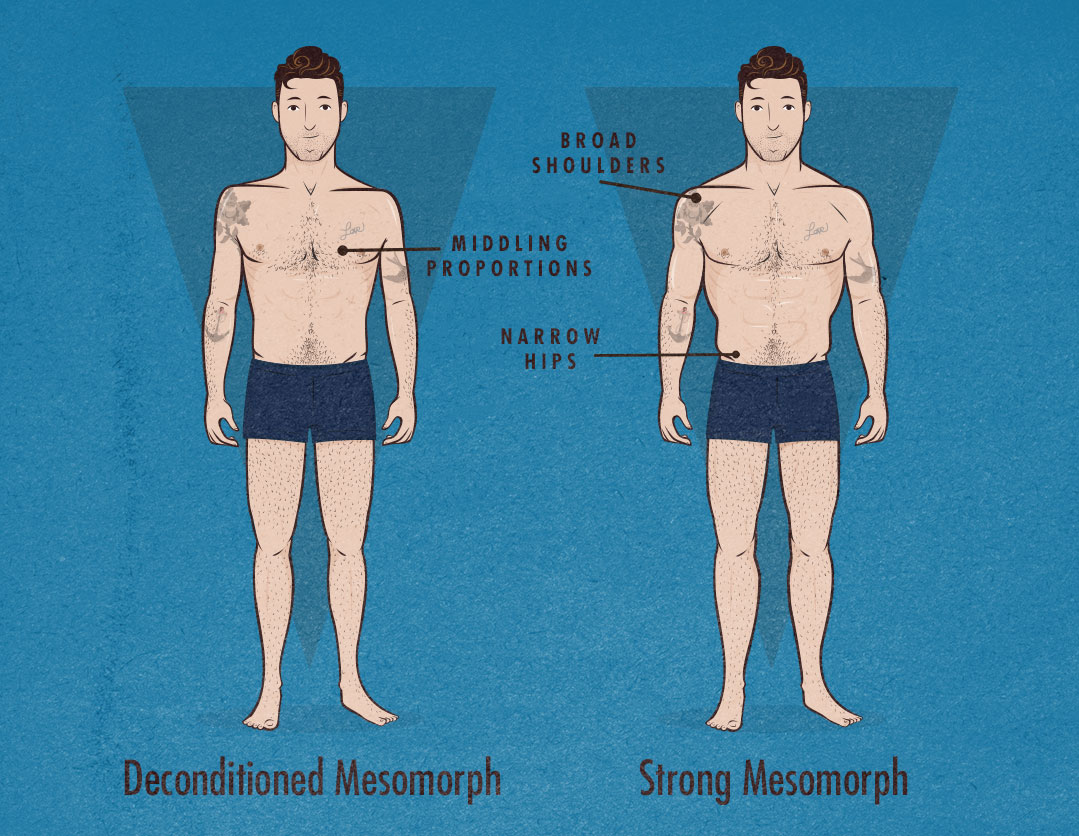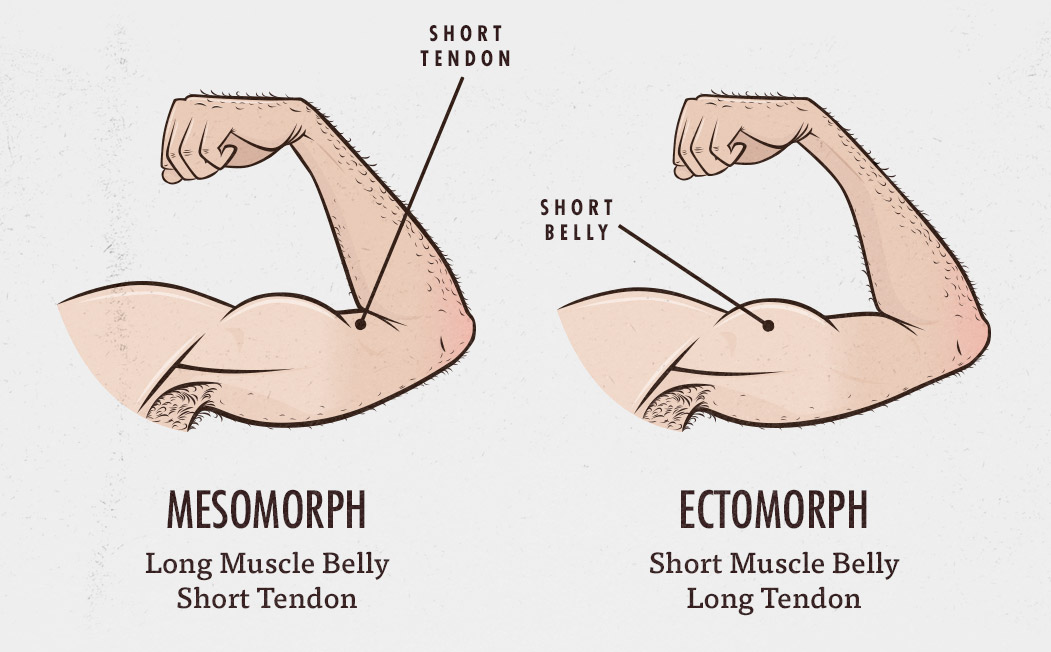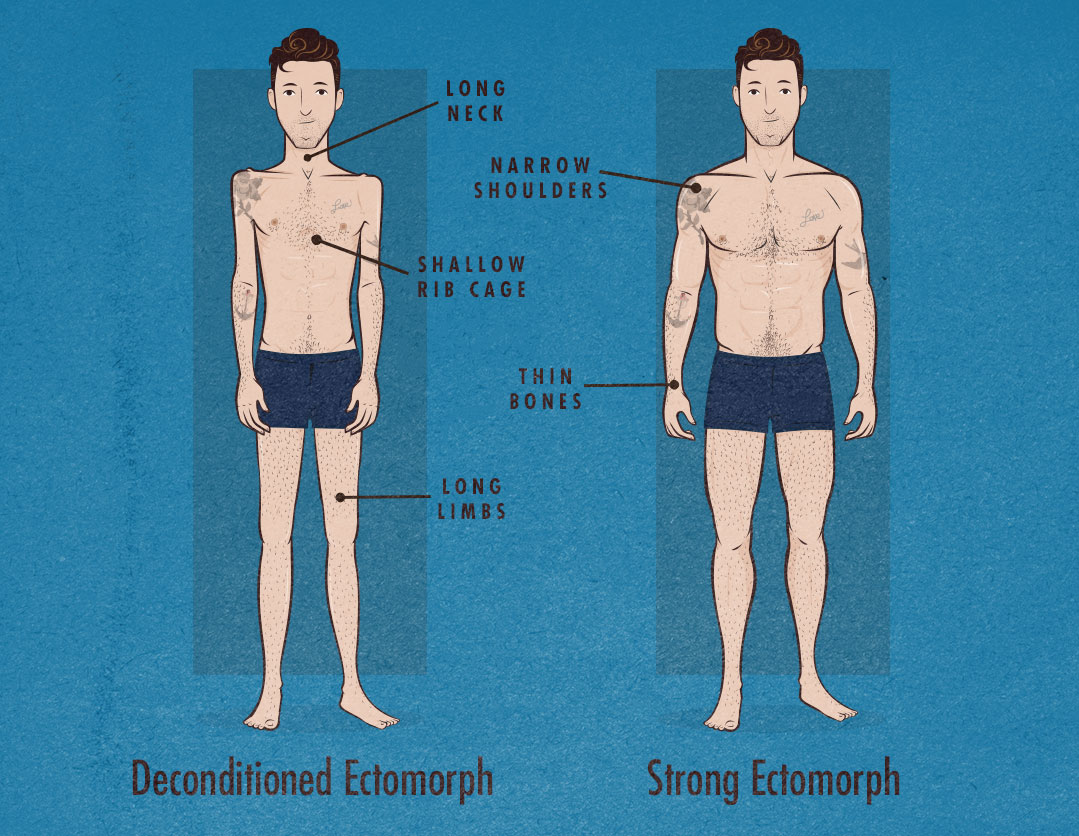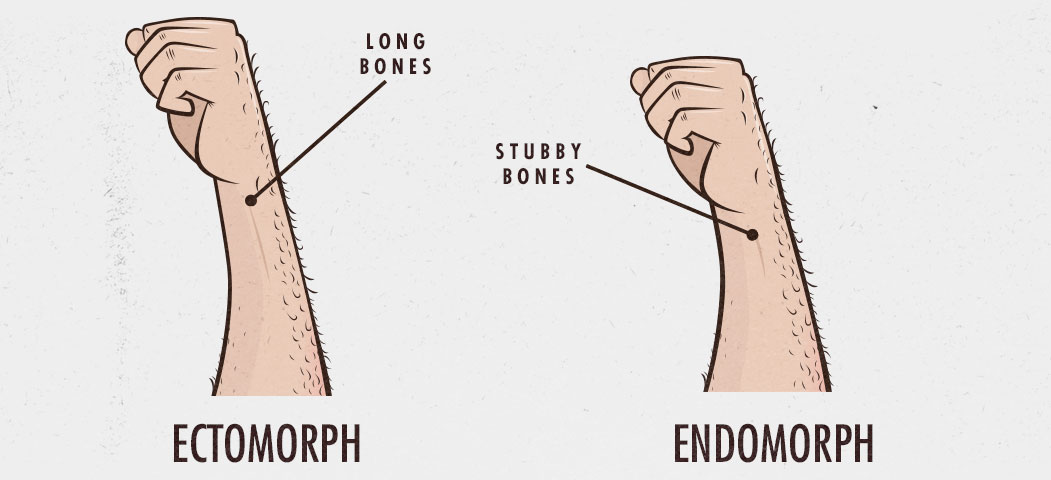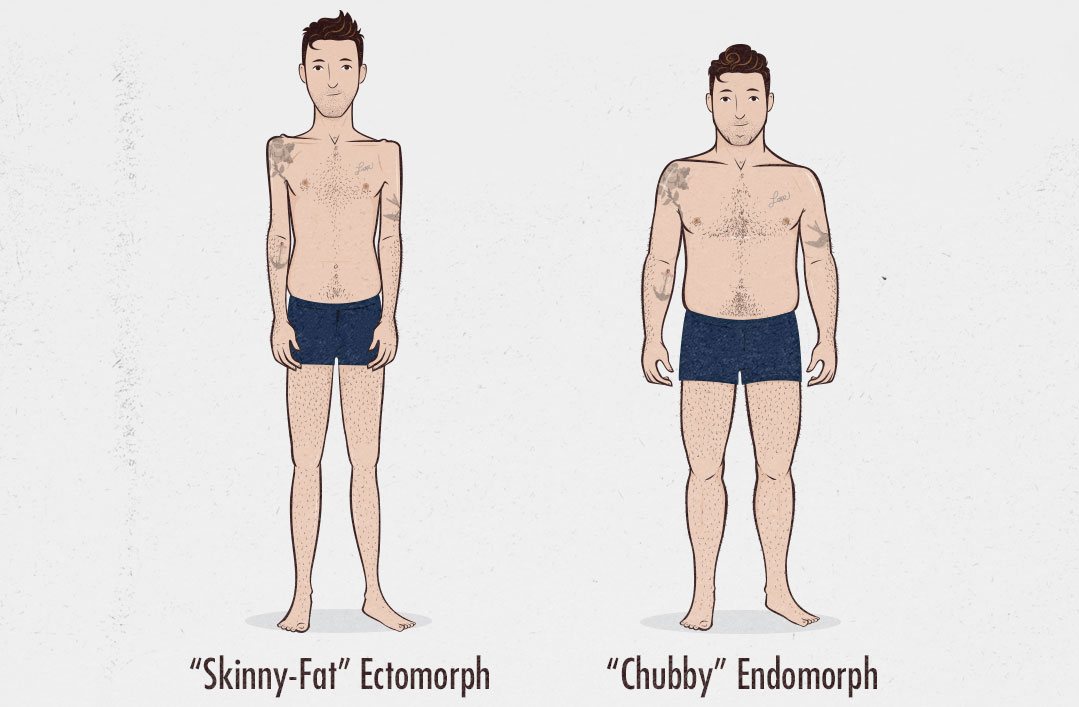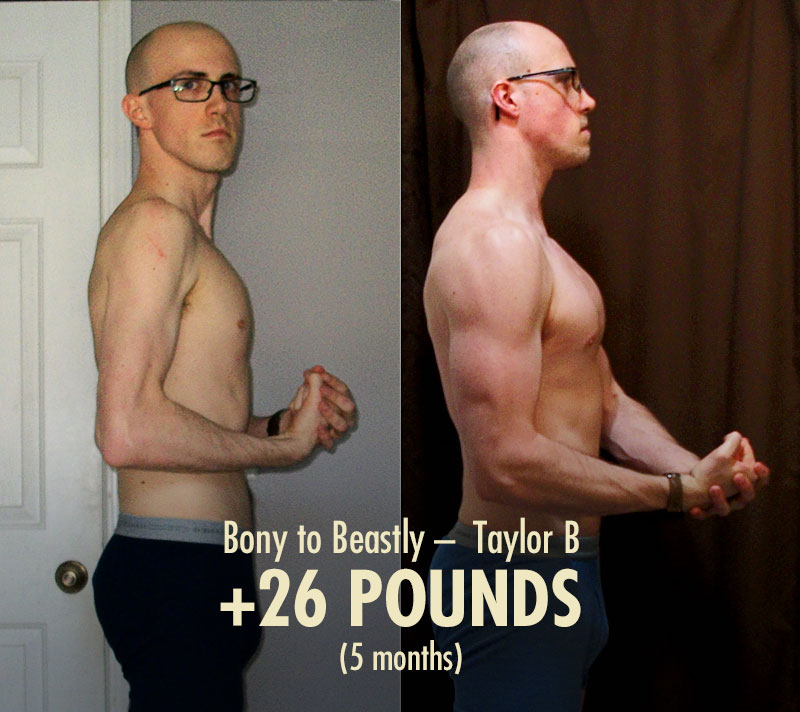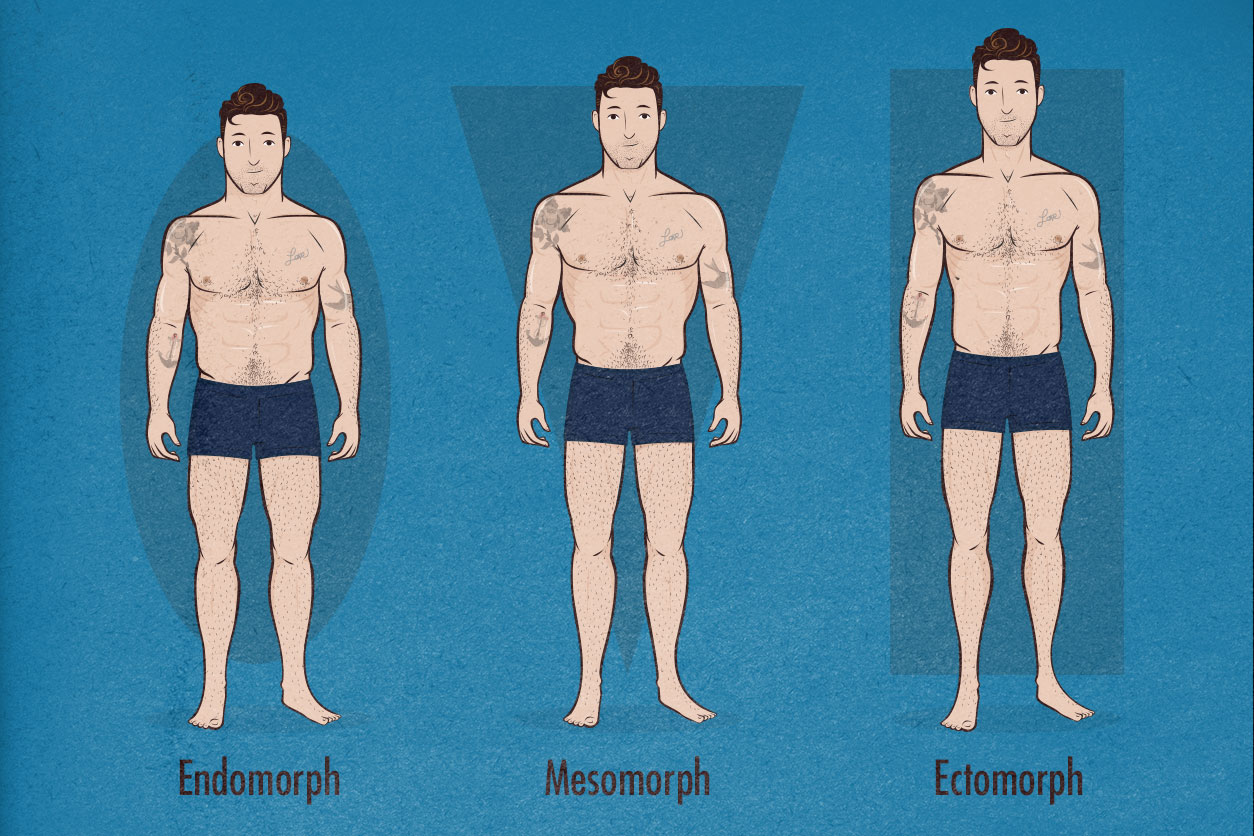You're reading How Big Should Your Legs Be? by Shane Duquette, originally posted on Bony to Beastly. If you enjoyed this post and want to read more, check out our website Bony to Beastly.
Most guys have a subconscious instinct to squat a little less, bench a little more. Most lifting programs tell us that we should suppress that instinct. But what if those lifting programs are wrong?
What if this whole “don’t skip leg day” thing is making us think that we should be training our legs far more than we actually should be?
What if it’s just this new bodybuilder “X-physique” trend trickling down to the mainstream lifter, even though the average lifter is far more interested in building a strong, healthy, athletic, attractive, v-taper?
In this article we’ll cover:
- The advantages of training your legs enough.
- The advantages of prioritizing your upper body after that.
- The most attractive proportions.
- How most workout programs might have more leg work than you need.
- How to get the most benefits with the fewest downsides.
Curious?
Most guys go to the gym without a workout program, and most of those guys do spend too much time benching, too little time squatting. That’s not a… good… approach, but it’s a whole helluva lot better than nothing.
You’d think this would leave tons of guys with imbalanced physiques, but more often than not it just leaves guys stuck in a perpetual plateau. They gain ten pounds and then their gains stop. Their non-program just isn’t good enough to get them to the next level.
It’s no big secret that following an actual workout program is critical if you want results that go beyond a few weeks. And I’m going to argue that most of those workout programs will have you spending too much time on lower body training.
Yep, I said it. I think most guys would benefit from a more upper-body dominant program. Not just in terms of looking more attractive, but also when it comes to general strength and general health.
Now, before I tell you why most programs have too much lower body work, nobody is saying you should always skip leg day. Training your legs is important. In fact, the best programs have at least a little leg training in every workout. (The more frequently you do leg lifts, the better your coordination gets.)
So. Let’s start with the not-so-controversial stuff.
The Five Reasons You Shouldn’t Neglect Your Legs
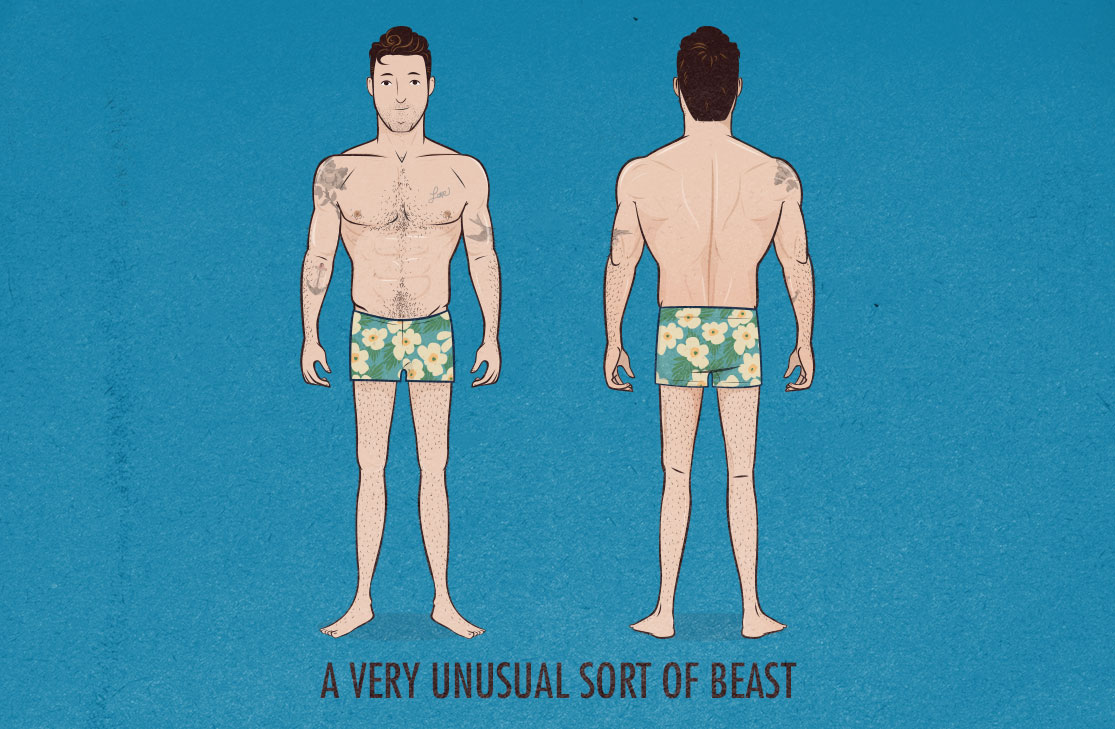
Most people realise that they shouldn’t skip every leg day ever. As I like to say, chickening out on leg lifts will literally make you look like a chicken. That’s why you rarely see guys who look like the fashionable man above.
But I have a confession to make. I skipped leg day. Now, to be fair, I was skipping push and pull day too. (And I didn’t know that dividing workouts into legs/push/pull was pretty silly.) But I was a graphic design student who didn’t know a single person who went to the gym. I’m not even sure I knew what a gym was. Anyway, I had no legs for 22 years. Just stilts.
Here I am participating in a university photography project.

And here are five reasons that you shouldn’t be like me:
5. Training your lower body is great for your health and your brain. You can get some of these benefits just with cardio, but for others, you need to be doing some pretty strenuous lifting. There are some upper body lifts that surely have this effect, but all the really heavy lifts are the ones with a major lower body component (e.g. deadlifts).
For example, here’s a study looking at the brain function of identical twins as they age. The guys with the stronger legs had better brain function and more grey matter than their identical twins. Lifting heavy can physically change our brains. Pretty gnarly.
4. Mastering the lower body lifts will make you a better athlete. No real room for argument here, at least for most sports. The bigger the muscle, the more powerful it is. This helps with sprint speed, strength, and verticality. Moreover, weightlifting is one of the best ways to improve coordination and flexibility.
Heavy fully-body lifts are also the best for increasing bone density, reducing your risk of injury. (This is a major athletic advantage despite what soccer players would have you think.)
3. Leg lifts burn the most calories. Just kidding. I mean, this is true, but I’m just kidding about this being a benefit for us. #ectomorphstruggles
2. Having a powerful butt will help with nearly everything. There’s a common misconception that women like guys who are asses. In reality, women like guys who have asses. We’ve even had the wives and girlfriends of Beastly members write in, thanking us for giving their lover a butt.
I’m not even kidding.
As with most things that are considered attractive, there’s a reason for this. Asses are a natural indicator of health, athleticism, and strength. A strong pair of glutes will even help prevent lower back pain, which is one reason why the deadlift is so good for building up a strong, injury-resistant back.
1. Strength transference. Your legs are used to transfer strength in every single action that you do. Want to pick up a couch? Your grip strength, bicep strength or trap strength will probably be your limiting factor, yes, but if you don’t have a powerful lower body, you might throw out your back.
Hell, leg drive is even an important part of the bench press.
Now, the crazy part:
But You Still Might Want to Skip Some Leg Days
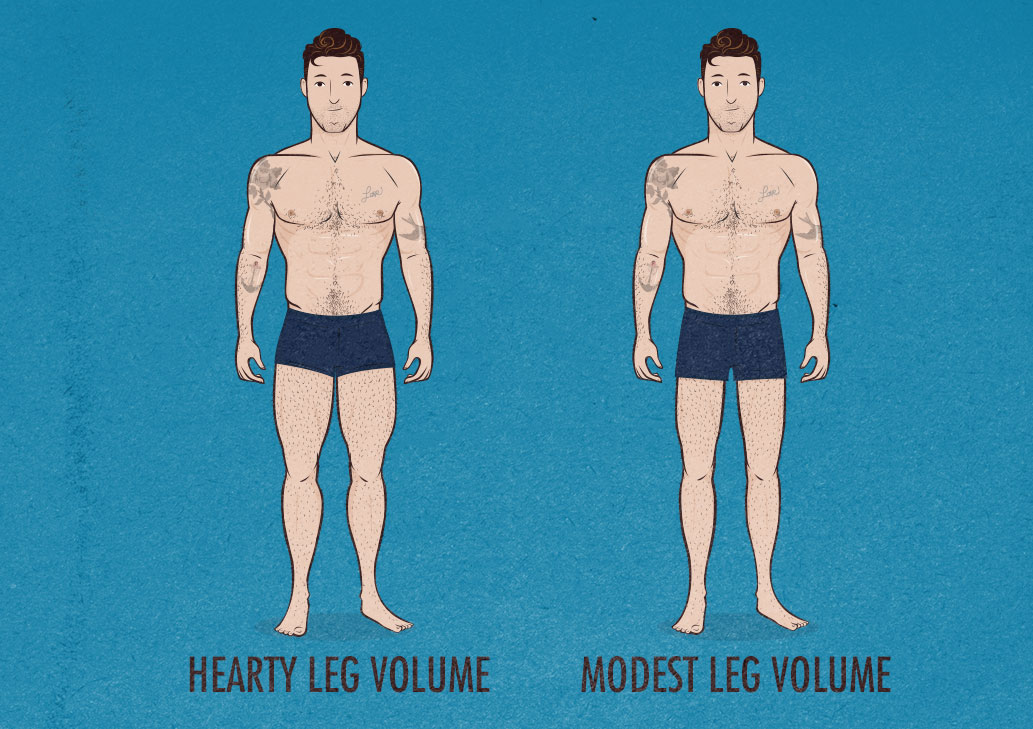
It’s pretty common for a guy to secretly skimp on his lower body training, but it’s very rare for a guy to be crazy enough to argue that we should be skimping on our lower body training.
Let me be that crazy person for a moment.
1. The health benefits of having a strong lower body cap out at a certain point. For example, last year I went to get a DEXA scan to measure my body fat percentage (which was 10.8%). Here in Toronto, you get DEXA scans at The Bone Wellness Centre, so, along with my body fat analysis, I got a bone-health consultation. I’ve only been lifting for a few years now and my bone density is already at the very top of the chart. No room for improvement.
That’s good news, yes, but hardly motivation to try and add another 100 pounds to my deadlift. At the time, I was deadlifting 375 pounds. I’ve since pulled 405. Is there really a reason to think that getting to 500 would further improve my general health?
It wouldn’t.
In fact, it would come with risks. While deadlifting heavy is fantastic for our brains, health and athleticism, deadlifting very heavy has a whole different risk/reward ratio. It’s actually pretty rare to see elite powerlifters who aren’t nursing some aches, pains, and injuries.
Same with squatting. (And, for the record, benching.)
2. The day-to-day benefits of having a strong lower body cap out at a certain point, too. Helping someone move when I was a super skinny guy was… not pretty. I was physically incapable of lifting heavier things, but even the lighter items were putting me at risk of injury.
I’m lucky that I didn’t throw out my back like my dad did. He was also super duper skinny, and a bad moving day left him with a lifelong injury that he still deals with today, several decades later.
I’ve helped with a surprisingly large number of moves since gaining 50 pounds, though, and I haven’t run into a single lower body strength issue. Not even one.
I’m not saying I’m immune to becoming tired, it’s just never my lower body that gives first. My fingers get tired, my traps get tired, my biceps get tired. It’s the same thing when I’m carrying around my girlfriend. Same with carrying groceries home.
In fact, I can’t think of a single time since getting to a 2-plate deadlift that my lower body strength has been a limiting factor. The main advantage to nearly doubling my deadlift strength was that it made my traps and forearms stronger.
I think we could probably do a better job of improving our day-to-day performance by swapping out some squats for farmer carries.
3. You don’t need huge legs for athletics. Again, the benefits cap out at a fairly modest point. If you disagree, check out Josh Norman, whose medium-sized legs are enough to earn him 15 million each year as one of the top cornerbacks in the NFL.

Nobody with a brain is saying he’s got chicken legs, but come on now, these are legs that still fit into regular jeans.
On that note…
4. Clothing companies don’t make pants for guys with jacked lower bodies. As Gregory O’Gallagher (from Kinobody) pointed out, if you keep going hard with the leg lifts, at a certain point, you need to start buying a too-large waist size or switch over to pants designed for overweight people.
Like us, O’Gallagher wasn’t saying that we should have small, weak or useless legs—he can also deadlift over 400 pounds—just that we don’t need to dedicate a ton of gym-time to them.
5. Squats won’t do much for your upper body. There’s a myth that to grow your upper body, you need to lift real hearty with your lower body. The idea is that it’s the lower body lifts, like squats, that stimulate the anabolic hormones—testosterone, growth hormone and IGF-1.
That’s true, yes, and a few notable studies are often thrown around. It’s important to look at all the studies, though. To quote Dr. Brad Schoenfeld, who published a paper reviewing all of the studies done thus far, “What seems relatively clear from the literature is that if a relationship does, in fact, exist between acute systemic factors and muscle growth, the overall magnitude of the effect would be fairly modest.”
But even if you want to fully capitalize on that factor, starting off your workout with a couple big, heavy compound lifts will have you covered. Lifts like: the bench press, chin-up, overhead press, squat, deadlift, row.
6. Doing more upper body work than lower body work will make you look better. This is a contentious point, so let’s give it a whole section. Maybe two. After all, most of our readers are single but not planning on staying that way forever.
And for the guys who aren’t single, well, you already have someone who might appreciate this.
What Proportions are the Most Attractive?
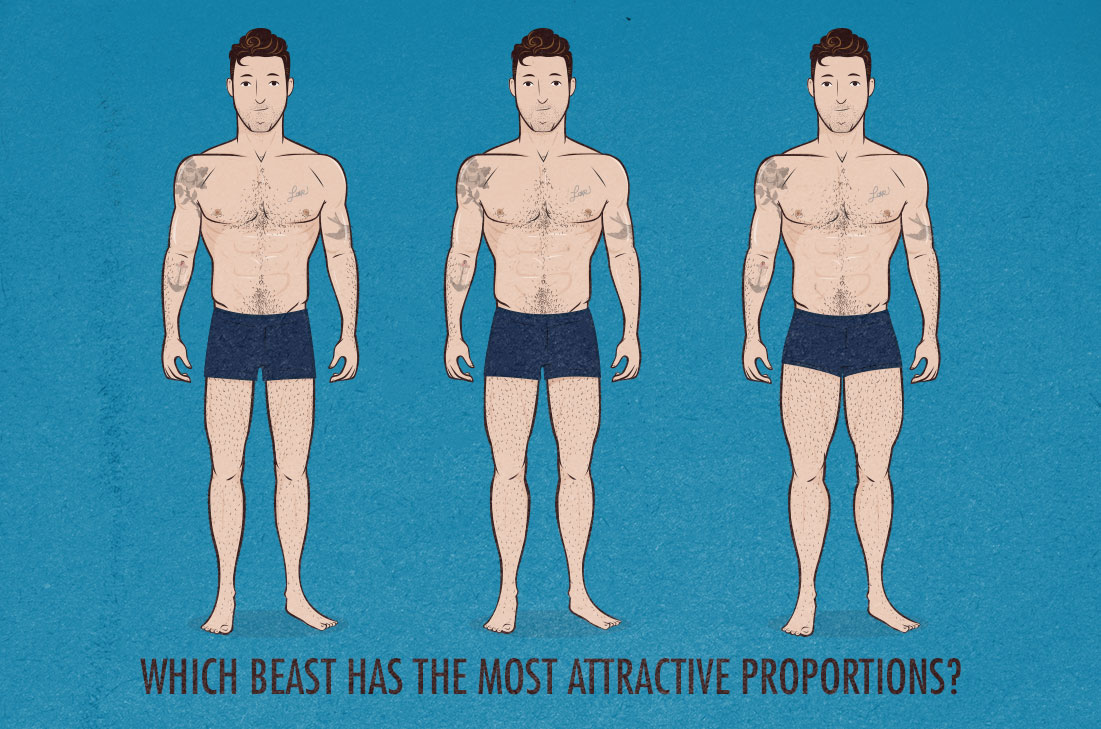
Different people have different stances on aesthetics. Women prefer guys who look fit/strong; guys will often want to look like bodybuilders; and bodybuilders will think that fit/strong guys don’t even lift.
If you want to know all about aesthetics, we’ve got an in-depth article on it here.
What we care about in this article is how big your legs should be compared to your upper body. Most guys have a fairly reasonable view on that. Women, too.
There’s one notable niche that disagrees: modern bodybuilders. Back in the golden era of bodybuilding, you’d have guys like Frank Zane (my favourite) and Arnold Schwarzenegger (most popular) winning the Mr Olympia title, and they had rather large upper bodies compared to their lower bodies.
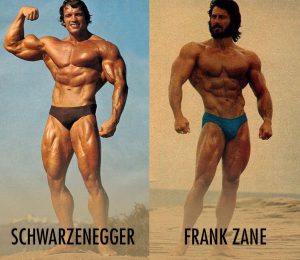
Now it’s all about the X-physique. Here’s the most recent Mr Olympia winner:
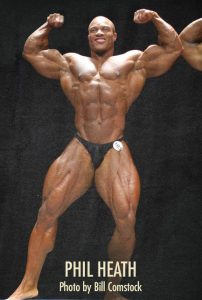
That’s cool. Mad respect for those guys. This isn’t a professional bodybuilding website, though, and I suspect you aren’t on the road to Mr Olympia.
Pro-bodybuilding stuff really doesn’t have much to do with attractiveness, either. Almost all women prefer guys who are dramatically smaller than that. Guys who look like lumberjacks or athletes, not steroids. There’s a reason why Schwarzenegger stars in films for dudes and Ryan Reynolds stars in movies for women.
This kind of physique is widely considered attractive (and it’s way healthier):

We can get far more specific, though.
Dr Casey Butts found that Ancient Greeks and modern women tend to prefer a similar kind of physique, so he crunched some numbers and created a set of proportions that he calls the “sexy physique.” These proportions are optimally attractive to women while still looking badass and masculine.
It also reflects the physique of a man who’s fairly athletic in a wrestler/strongman/Olympian kind of way, which is why it looks so good in the first place—it looks like a manly man with elite athletic prowess.
According to Butts’ guidelines, your hips should be about 25% larger than your waist, your thighs should be about 25% smaller than your waist, your shoulders should be around 62% larger than your waist, and your biceps should be around 50% the size of your waist.
Here are the calculations:
Sexy waist = approximately 12% body fat
Sexy hips = waist x 1.25
Sexy thighs = waist x 0.75
Sexy shoulders = waist x 1.618
Sexy biceps = waist x 0.50
Here’s an example of a well-proportioned dude:
Waist: 30 inches
Hips: 37.5 inches
Thighs: 22.5 inches
Shoulders: 48.5 inches
Biceps: 15 inches
So to answer the question from up above, the beast in the middle is the most attractive.
Even for the very hardgaineriest of ectomorphs, all of these proportions are realistically achievable.
Why Are Bigger Upper Bodies More Attractive?
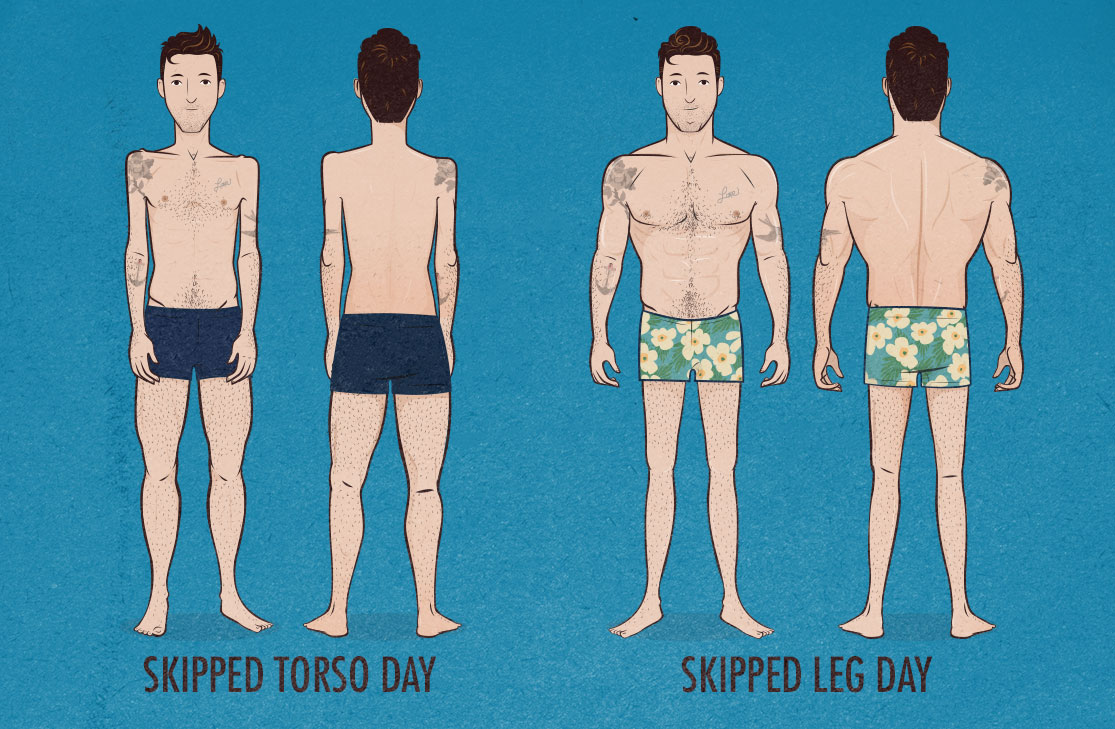
I’m going to go out on a limb here and say that it’s because of sex differences. When we hit puberty, our shoulders grow broader. We also start storing fat primarily in our stomachs. We also tend to grow longer torsos than women.
The way that we build muscle lines up with this as well. We have a lot of androgen receptors in our trapezius and shoulder muscles, meaning that we tend to build muscle there quite easily. Far more easily than, say, our calves.
When women hit puberty, their hips grow broader, they start storing fat mostly in their lower bodies, they grow longer legs, and they have fewer androgen receptors in their upper bodies.
So men are kind of naturally upper-body dominant. If we get really fat, we look like that guy from Despicable Me. If we build a freakish amount of muscle, we look like Frank Zane. Even if we don’t have a single gain to our name, our upper body length and width is larger than it would be if we were women.
So being a man will usually make our upper bodies proportionally bigger than our lower bodies. But with enough deliberate effort, we can undo this…
If we spend a lot of time focusing on squats, for example, we’re going to wind up gaining a lot of lower body size without gaining a proportionate amount of upper body size.
How Much Leg Work Should You Do?
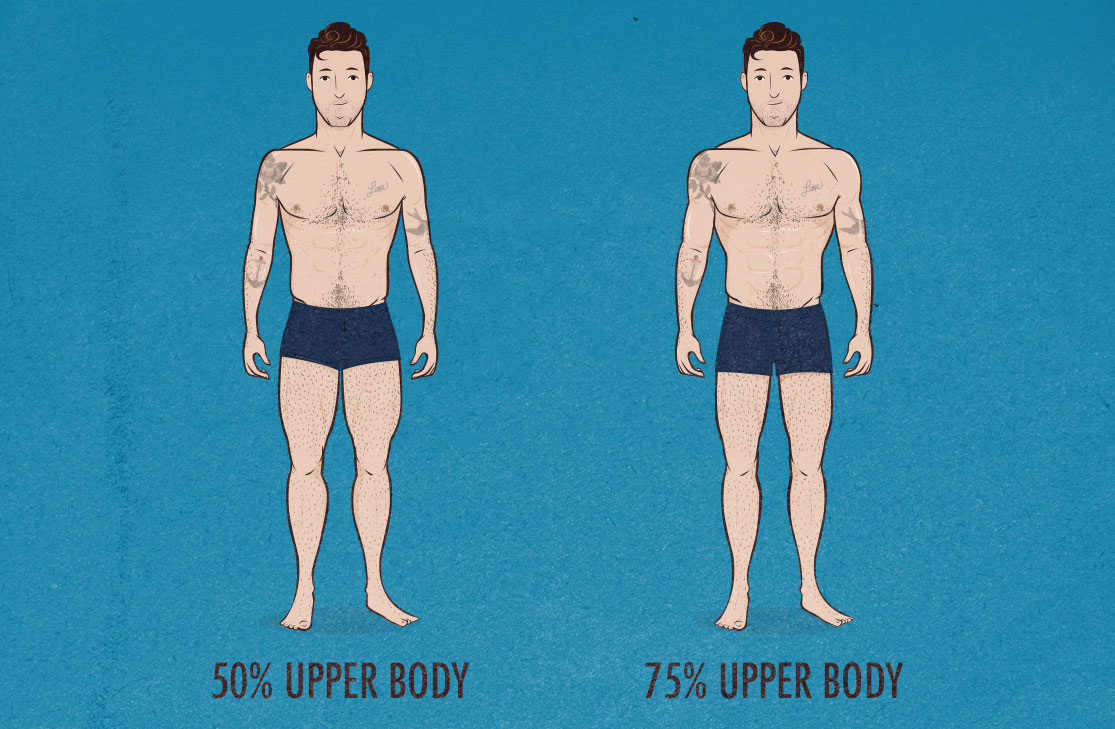
It’s time to get a little bit technical. Bear with me. The more time you spend lifting with a particular muscle, the more that muscle will grow. More lifting = more growth. But keep in mind that our ability to recover is finite. If we lift too much, we accumulate fatigue instead of gains. (Here’s a meta-analysis of all the studies done on this topic.)
So the perfect workout program is one that has you lifting as much as you can fully recover from. Dr Mike Israetel calls this our maximum recoverable volume (MRV). The closer we can get to our MRV, the more quickly we’ll grow.
Since we can only lift so much, the price of a more powerful lower body is a less powerful upper body, and vice versa.
Furthermore, some lifts are harder to recover from than others. A squat is very taxing on our central nervous system, a bicep curl is not. If your program has 1 fewer set of squats, that might leave room for 3 more sets of curls. That might not sound functional, but I’d be willing to bet your biceps need that strength more than your legs do.
This means that when designing a program, we aren’t just trying to cram a bunch of compound lifts together, we’re trying to pick the lifts that offer us the best return on our investment.
I know this might seem like splitting hairs, but if you gain 30 pounds while following one program, you might wind up with a totally different physique than if you gained 30 pounds following another program. If you care about that, this matters a lot.
And different programs make these judgement calls differently.
Let’s look at a few popular approaches.
Upper-Lower Split Routine. An upper-lower split program alternates between upper-body days and lower-body days—50% volume for each. This is a popular approach for some athletes, and I’ve seen Eric Cressey recommend it in some of his programs. Great way of training for certain athletes and for X-physique guys.
Monday: Lower body.
Tuesday: Upper body.
Wednesday: Rest.
Thursday: Lower body.
Friday: Upper body.
Saturday: Rest.
Sunday: Rest.
5×5. Depending on the 5×5 program, it might have something like 40% lower-body lifts, 60% upper body lifts. (I got that breakdown from Stronglifts, which is a squat-based program.) The idea here is to gain a lot of strength in the powerlifting lifts, so that makes sense. 2 of the 3 powerlifting lifts are lower body lifts, after all.
Monday: Full body, squat emphasis.
Tuesday: Rest.
Wednesday: Full body, squat emphasis.
Thursday: Rest.
Friday: Full body, squat emphasis.
Saturday: Rest.
Sunday: Rest.
Triple-Split / Bro-Split / PLL. This kind of program has a push, pull, and leg day, with each of those days having a similar training volume. That’s 67% upper body, 33% lower body. These programs tend to be higher in volume (more lifts per muscle group per week) and thus do better at building overall muscle mass than strength-focused programs. Even these programs tend slightly more towards the X-physique, but depending on your style (and genetics), these can give pretty aesthetic results.
This isn’t my favourite way to design a routine for several good reasons, outlined in this article, but these programs are not at all bad.
Monday: Push, size emphasis.
Tuesday: Rest.
Wednesday: Pull, size emphasis.
Thursday: Rest.
Friday: Legs, size emphasis.
Saturday: Rest.
Sunday: Rest.
Bony to Beastly (Classic Full Body). Now for the crazy-sounding part. Bony to Beastly is around 75% upper body, 25% lower body. Our program is all about helping skinny guys gain size in a healthy and attractive way. As it turns out, this is best accomplished by mixing strength training and bodybuilding together. We even throw in some bulking tricks that strongmen and athletes use.
Monday: Full body strength + upper body size.
Tuesday: Rest.
Wednesday: Full body strength + upper body size.
Thursday: Rest.
Friday: Full body strength + upper body size.
Saturday: Rest.
Sunday: Rest.
This isn’t radical, just more classic. 50’s lifters like Steve Reeves would do full-body workouts three times per week that were around 75% upper body. His aesthetic became so famous that guys still aspire to look like him today.
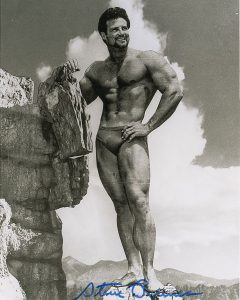
It’s worth noting that not all aspects of his workout were ideal. Bodybuilding was a new thing back then, and over the past 60 years, we’ve learned a lot more about how to build an optimal workout program. He hit the nail on the head by doing 3 full body workouts per week, though, with modern research showing it to be the most effective way to bulk up. I think his upper/lower body ratio was spot on as well, although that’s more subjective.
The Takeaway
I think this whole “don’t skip leg day” thing is awesome. Training our legs is amazing for our health, fitness, brain and appearance. In fact, having strong, functional legs is important enough that I think we should train our legs three times per week (as part of a full-body workout). That higher frequency will give us the best gains, and also the best improvements in coordination.
But we don’t need to do that much leg volume, and I think most programs go way overboard with it. If we do too much leg volume, we’ll grow our legs larger than they need to be at the expense of our upper bodies. If you gain 10 pounds, that might not matter a lot. But if you’re on this site, I bet you’re after more like 30 pounds. Maybe more.
I would argue that leg training is an 80–20 kind of situation, where 20% of the leg-work yields 80% of the benefit (or more), leaving us lots of time and energy to focus on the areas that we’re more eager to grow.
So I think leg day is awesome. But we have this masculine instinct to spend more time on our upper bodies because we instinctively want to look more masculine.
And our instincts aren’t wrong.
If you want to see what that looks like, here’s an example. Thanos spent around 25% of his time in the gym on his legs, and I would say that he got very proportionate and aesthetic gains. Would he have looked or performed better if he did twice as much leg work and half as much upper-body work? I really don’t think so.
In fact, after just a few months of doing a workout routine that isn’t all that leg-centric, I bet he’s already at the most attractive leg size for his frame.
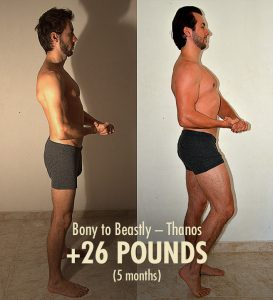
To wrap this up, there’s absolutely nothing wrong with a higher leg volume. But there’s also no sort of moral imperative there either. You can do less if you want to. Or more. Just consider your goals when making that decision.
What do you think? Let us know down below in the comments!

